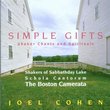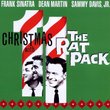| All Artists: Larry [Composer] Austin, Joan La Barbara, Stephen Travis Pope, Laurie Spiegel Title: The Virtuoso In The Computer Age III (CDCM Computer Music Series Vol. 13) Members Wishing: 2 Total Copies: 0 Label: Centaur Release Date: 3/17/1995 Genres: Special Interest, Pop, Classical Styles: Vocal Pop, Opera & Classical Vocal, Historical Periods, Modern, 20th, & 21st Century Number of Discs: 1 SwapaCD Credits: 1 UPC: 750582971235 |
Search - Larry [Composer] Austin, Joan La Barbara, Stephen Travis Pope :: The Virtuoso In The Computer Age III (CDCM Computer Music Series Vol. 13)
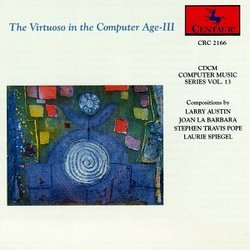 | Larry [Composer] Austin, Joan La Barbara, Stephen Travis Pope The Virtuoso In The Computer Age III (CDCM Computer Music Series Vol. 13) Genres: Special Interest, Pop, Classical
|
Larger Image |
CD DetailsSimilarly Requested CDs |
CD ReviewsSummary of reviews of "Kombination XI" in the press 08/12/1999 (5 out of 5 stars) "What's nice here [in Kombination XI] is that Pope isn't so much interested in the concept of processed voices, but in what the processing actually does to the sound. [...] The piece transcends the "sound as product demonstration" and creates quite a nice atmosphere that is similar to the work of John Duncan or even the features of Nono's late-60s tape work. Texturally rich-something lacking in the world of computer music-and programmatically intriguing, [Kombination XI] stands out as the sure winner on these two CDs. (Jim O'Rourke in Your Flesh) The poem's image of staring into a river on a cold winter night convincingly permeated the quiet, haunting mood of the work [Kombination XI]. [...] The drone runs continuously, and it is fascinating to follow its course as it is absorbed, overpowered and varied throughout the piece. [...] The drone and the vocal sounds create a consistent sound world that skillfully unifies a wide array of techniques, ranging from a tapestry of chatty syllables to percussive rapid-fire consonants. (Todd Winkler in Computer Music Journal) I am consistently drawn in to explore this sound and feeling world [of Kombination XI]. The sense of structure is strongly evident at both micro- and macro-levels. This sense of utter structure permeating the work, and a refined setting of the poetry are main components contributing to this ritualistic character. This piece works both as music and as ritual. (Craig Harris in Leonardo) [Kombination XI] is a setting of a German poem by Helmut Heisenbuettel. Having lived in Hamburg myself (where the poem takes place), I can empathize very strongly with the imagery of isolation and alienation in the text that attracted Pope. Two voices, male and female, comprise virtually all of the sound material for the work, although it is only from the male voice that the text as a whole is recognizable. The female voice, through more extreme application of processing, fragmentation, and exploitation of particular phonemes, is used to create an ingenious sonic "bed" in which the male recitation lies. Pope makes a virtue of the (potentially objectionable) timbral artifacts produced by what I assume to be a phase vocoder; these artifacts provide both a strong unifying component to the work as well as a reinforcement of the emotional undercurrent of the text. Kombination XI is a compelling exploration of the mutagenesis of poetry into music. It is a serious work which merits close listening. (Rick Bidlack in Array)" An odd mix; sampling recommended Steve Benner | Lancaster, UK | 11/26/2001 (3 out of 5 stars) "One of my major criticisms of earlier volumes in this series of releases by the Consortium to Distribute Computer Music, has been the general absence from it of any music from women composers. This thirteenth volume redresses the balance a little by presenting works by two women composers and also by including a substantial sound portrait of one of them.Larry Austin's 20-minute work, "La Barbara: The Name, The Sounds, The Music" (1991), uses extracts from a recorded conversation between Austin and acclaimed singer and composer, Joan La Barbara, to punctuate a montage of musical events. Arranged in three sections, the musical events themselves emanate either from computer processed samples of the original conversation, or else rich, improvised vocalisations by the subject of the work herself. The result is a fascinating sonic portrait of Joan La Barbara, not only as singer and composer, but also as a person. It is doubly pertinent when heard in conjunction with one of Ms La Barbara's own compositions, as here. "L'albero dalle foglie azzure" or "Tree of Blue Leaves" (1989) is a rhapsodic work for oboe and computer music on tape. The tape part, which is prominent only in one short section of the piece, was produced using sampled oboe and bassoon sounds, blended with other sounds - mostly percussive or vocal - from an earlier work, "Cyclone". The piece was commissioned from Joan La Barbara by oboist Barbara Herr Orland and requires a virtuosic mastery of extended playing techniques, admirably handled on this recording by Ms Orland.The other woman composer represented on this disc is Laurie Spiegel, who has been active in the development of computer-based synthesis and composition systems since the early '70s. Her substantial 22-minute composition "Cavis Muris" (1986) was the first to be produced using the intelligent musical composition system, Music Mouse, developed by Ms Spiegel and running on a 512K Macintosh connected here to a Yamaha TX816 synthesis module. The title translates as "The Mouse Hole" and the work is a fanciful portrayal of the world as it might be viewed from the perspective of a mouse - a living one, that is, not the computer variety. The idea for the work suggested itself from her observation of an increasing number of such creatures gradually take up residence with her in the former warehouse loft where she worked on the code for the Music Mouse system.The sounds used in the work are typical of much output from early FM synthesisers such as the TX816 - rich bell textures; thin electronic strings and ringing percussive sounds. Although the timbres are modern, however, the counterpoint for the composition uses a pre-Classical model, whilst its overall aesthetic owes more to the great Romantic orchestrators and composers, Berlioz and Rimsky-Korsakov, making for something of a poly-stylistic outcome. The work's five movements grow from small, tentative beginnings and build through a series of explorations into wider ranging ideas, freely running within a vast sonic landscape, and all pulled together beautifully for the final movement. I don't think anyone would ever regard this work as any great masterpiece but it is certainly fun and conjures up some lovely images of scampering, scurrying critters, sometimes fearful, at other times fearless and occasionally simply lost within the immensity of the world around them. The final work on the disc returns to the sound world of processed vocal samples with which the disc opens. "Kombination XI: A Ritual Place for Processed Voices" (1978/1989-90) by Stephen Travis Pope is a setting of a poem, in its original German, by Helmut Heissenbüttel. The voices of two speakers of the text, one male, the other female, form the basis of the work. These are subjected to a fairly light filtering and reverberation (in the case of the man's voice) or else chopped up beyond deciphering (in the case of the woman's) and applied over a more or less continuous pedal tone within six, short (2-minute) movements. The result is the first part of what the composer describes as a liturgy, within "a new sacred ritual for the 21st century". Quite what role the composer has in mind for this ritual is never made clear. Nor am I sure about how often anyone would want to hear it...All in all, this is a somewhat odd assemblage of works, with little rhyme or reason that I could discern for their appearance together on one disc. There is, nevertheless, much worth hearing here and anyone with an interest in late twentieth century American art music - or, indeed, seekers of new sacred rituals - should certainly give it a listen. You might want to do that before forking out your money, though."
|

 Track Listings (15) - Disc #1
Track Listings (15) - Disc #1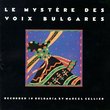
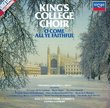
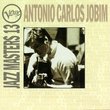
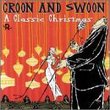
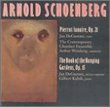
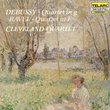
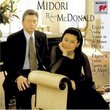
![Brahms: Ein deutsches Requiem [A German Requiem]](https://nationalbookswap.com/cd//m/23/8723/6058723.jpg)
